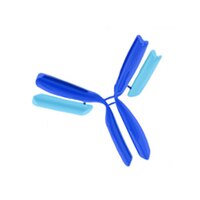GR37 Sigma-AldrichAnti-Vitamin D Receptor (Ab-1) Rat mAb (9A7γE10.4)
This Anti-Vitamin D Receptor (Ab-1) Rat mAb (9A7γE10.4) is validated for use in Frozen Sections, Gel Shift, WB, IP, Paraffin Sections for the detection of Vitamin D Receptor (Ab-1).
More>> This Anti-Vitamin D Receptor (Ab-1) Rat mAb (9A7γE10.4) is validated for use in Frozen Sections, Gel Shift, WB, IP, Paraffin Sections for the detection of Vitamin D Receptor (Ab-1). Less<<Recommended Products
개요
| Replacement Information |
|---|
주요 사양표
| Species Reactivity | Host | Antibody Type |
|---|---|---|
| Am, Ch, Ht, H, M, Porcine, R | R | Monoclonal Antibody |
가격 및 재고여부
| 카탈로그 번호 | 재고 정보 | 패킹 | 포장 단위 | 가격(VAT 별도) | 수량 | |
|---|---|---|---|---|---|---|
| GR37-100UGCN |
|
Plastic ampoule | 100 μg |
|
— |
| Description | |
|---|---|
| Overview | Recognizes both occupied and unoccupied vitamin D receptor in breast carcinomas expressing the vitamin D receptor protein. |
| Catalogue Number | GR37 |
| Brand Family | Calbiochem® |
| Product Information | |
|---|---|
| Form | Liquid |
| Formulation | In 10 mM PBS, 0.2% BSA, pH 7.4. |
| Positive control | Breast carcinoma tissue (see comments) |
| Preservative | ≤0.1% sodium azide |
| Quality Level | MQ100 |
| Physicochemical Information |
|---|
| Dimensions |
|---|
| Materials Information |
|---|
| Toxicological Information |
|---|
| Safety Information according to GHS |
|---|
| Safety Information |
|---|
| Product Usage Statements |
|---|
| Packaging Information |
|---|
| Transport Information |
|---|
| Supplemental Information |
|---|
| Specifications |
|---|
| Global Trade Item Number | |
|---|---|
| 카탈로그 번호 | GTIN |
| GR37-100UGCN | 04055977228311 |
Documentation
Anti-Vitamin D Receptor (Ab-1) Rat mAb (9A7γE10.4) MSDS
| 타이틀 |
|---|
Anti-Vitamin D Receptor (Ab-1) Rat mAb (9A7γE10.4) Certificates of Analysis
| Title | Lot Number |
|---|---|
| GR37 |
References
| 참고문헌 보기 |
|---|
| Brown, A.J. 1999. Nephrol. Dial. Transplant. 14, 11. Fleet, J.C. 1999. Nutr. Rev. 57 60. Evans, S.R., et al. 1998. Clin. Cancer Res. 4, 1591. Friedrich, M., et al. 1998. J. Histochem. Cytochem. 46, 1335. Issa, L.L., et al. 1998. Inflamm. Res. 47, 451. Kivineva, M., et al. 1998. J. Steroid Biochem. Mol. Biol. 66, 121. Nangia, A.K., et al. 1998. J. Steroid Biochem. Mol. Biol. 66, 241. |
Citations
| 타이틀 | |
|---|---|
|
|
| Data Sheet | ||||||||||||||||||||||||||||||||||||||||||||
|---|---|---|---|---|---|---|---|---|---|---|---|---|---|---|---|---|---|---|---|---|---|---|---|---|---|---|---|---|---|---|---|---|---|---|---|---|---|---|---|---|---|---|---|---|
|
Note that this data sheet is not lot-specific and is representative of the current specifications for this product. Please consult the vial label and the certificate of analysis for information on specific lots. Also note that shipping conditions may differ from storage conditions.
|







